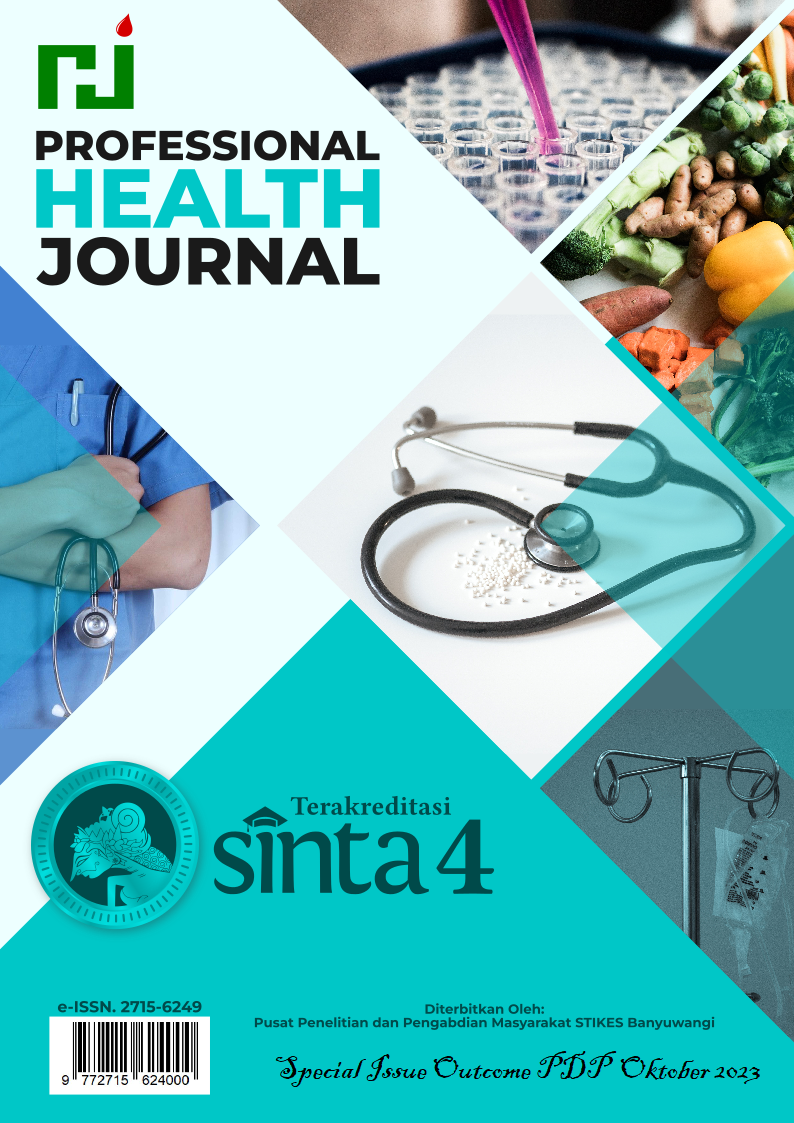Persepsi Ibu Hamil Tentang Donor ASI di Margadana Kota Tegal
DOI:
https://doi.org/10.54832/phj.v5i1sp.443Keywords:
perception, donor breast milkAbstract
Exclusive breastfeeding is the first choice for infant nutrition. Breast milk produced by the mother and contains all the nutrients needed by the baby for the growth and development needs of the baby. But not all mothers are able to give breast milk because of certain needs. Breast milk donors become an option in these conditions. Breast milk donors are not very popular in developing countries like Indonesia. This study discusses the perception of pregnant women about breastfeeding donors as an effort to look for information on breastfeeding donors to the community. By using descriptive research and quantitative learning for 36 pregnant women. The results showed that most pregnant women had good knowledge about exclusive breastfeeding (91.7%), all pregnant women (100%) have a commitment to provide exclusive breastfeeding and have positive perceptions about breastfeeding donors (83.3%). Need help and institutions related to the implementation of breastfeeding donors to avoid uncontrolled breastfeeding assistance.
Downloads
References
Kementerian Perencanaan Pembangunan Nasional RI, Pedoman Perencanaan Program Gerakan Nasional Percepatan Perbaikan Gizi Dalam Rangka Seribu Hari Pertama Kehidupan. Jakarta: Kementerian Perencanaan Pembangunan Nasional RI, 2013.
Kementerian Kesehatan RI, “Data dan Informasi Profil Kesehatan Indonesia 2018,” Jakarta, 2019.
K. K. Iloh et al., “Perception of donor breast milk and determinants of its acceptability among mothers in a developing community: A cross-sectional multi-center study in south-east Nigeria,” Int. Breastfeed. J., vol. 13, no. 1, pp. 1–12, 2018, doi: 10.1186/s13006-018-0189-2.
S. Fataruba, “Donor Air Susu Ibu (ASI) dan Permasalahan Hukumnya serta Upaya Pencegahan Terjadinya Hubungan Kemahraman | Fataruba | SASI,” SASI, vol. 25, no. 1, pp. 37–46, 2019.
Dwiguna, “Faktor-faktor Penyebab Ibu Muda Memilih Susu Formula di Kelurahan Tanjungrejo Semarang,” Universitas Negeri Semarang, 2013.
N. Nurleli, J. M. Purba, and R. Sembiring, “Hubungan Pengetahuan dan Sikap Ibu dengan Tindakan Pemberian Asi Eksklusif di Puskesmas Rambung Kecamatan Binjai Selatan Kota Binjai Tahun 2017,” J. Ris. Hesti Medan Akper Kesdam I/BB Medan, vol. 3, no. 1, p. 1, 2018, doi: 10.34008/jurhesti.v3i1.16.
S. N. Hidayah, U. Latifah, and M. Qudriani, “Pengalaman Menyusui Eksklusif pada Ibu yang Menjalani Long Distance Mariage di Kecamatan Tegal Barat Kota Tegal,” Bhamada J. Ilmu dan Teknol. Kesehat., vol. 9, no. 2, 2018.
N. A. Suciati, M. Qudriani, and U. Baroroh, “Hubungan Antara Tingkat Pengetahuan Suami Mengenai ASI Eksklusif dengan Penerapan Breastfeeding Father di Kelurahan Pesurungan Lor Kecamatan Margadana Tahun 2015,” Siklus J. Res. Midwifery Politek. Tegal, vol. 4, no. 2, pp. 91–93, 2015.
A. Yusrina and S. R. Devy, “Faktor yang Mempengaruhi Niat Ibu Memberikan Asi Eksklusif di Kelurahan Magersari, Sidoarjo,” J. PROMKES, vol. 4, no. 1, p. 11, 2017, doi: 10.20473/jpk.v4.i1.2016.11-21.
A. Nurani, 7 Jurus Sukses Menyusui. Jakarta: PT. Elex media Komputindo, 2013.
A. F. Saptari, “Hubungan Sikap Dan Pengetahuan Dengan Niat Mendukung Praktikan Pemberian Asi Ekslusif Pada Mahasiswa Magister Pria Universitas Indonesia Tahun 2013,” Universitas Indonesia, 2013.
Abdul Halim, “Donor Asi Dalam Perspektif Hukum Islam,” J. Stud. Islam MIYAH, vol. 12, no. 6, pp. 1–18, 2016.
U. Latifah, S. N. Hidayah, and M. Qudriani, “Perilaku Ibu Primipara dalam Pemberian Asi Eksklusif di Kecamatan Tegal Barat Kota Tegal,” Siklus J. Res. Midwifery Politek. Tegal, vol. 8, no. 1, p. 67, 2019, doi: 10.30591/siklus.v8i1.1226.
S. Arslanoglu, E. E. Ziegler, and G. E. Moro, “Donor human milk in preterm infant feeding: Evidence and recommendations,” Journal of Perinatal Medicine, vol. 38, no. 4. De Gruyter, pp. 347–351, 2010, doi: 10.1515/JPM.2010.064.

















